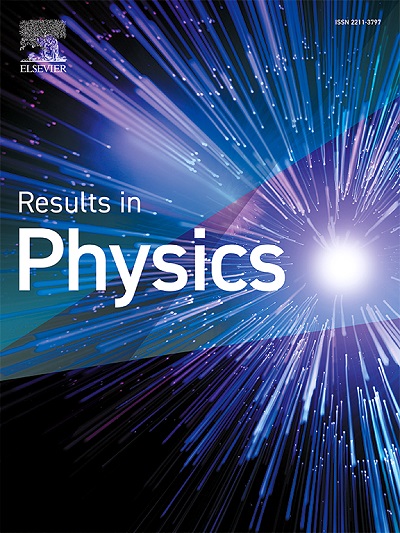Theoretical investigation of plasmonic properties of gold-silver alloys for SPR biosensing applications
IF 4.4
2区 物理与天体物理
Q2 MATERIALS SCIENCE, MULTIDISCIPLINARY
引用次数: 0
Abstract
Surface Plasmon Resonance (SPR) arises from the light-induced excitation of free electrons near a metal surface, making it a key mechanism in biosensing applications. While gold and silver are the commonly used metals, gold-silver (Au-Ag) alloys have gained interest in SPR. However, the impact of different gold-to-silver composition ratios on SPR performance remains underexplored, complicating alloy selection for applications such as SPR biosensors. This study theoretically investigates the influence of Au-Ag alloy compositions on the Surface Plasmon Polariton (SPP) wave characteristics and SPR biosensor performance using the Transfer Matrix Method (TMM) and the Kretschmann configuration. Our findings suggest that specific alloy compositions can enhance sensitivity and propagation length, making them promising for high-performance biosensing applications. A proposed biosensor design incorporating an Au-Ag alloy, a CaF2 glass prism, Black Phosphorus (BP) layers, and water as the sensing medium is discussed. Additionally, we outline the procedures and potential challenges associated with its practical implementation. This work contributes to advancing high-performance biosensing technologies and aligns with the Sustainable Development Goals (SDGs) 3 and 9 of the United Nations (UN).
用于SPR生物传感的金银合金等离子体特性的理论研究
表面等离子体共振(Surface Plasmon Resonance, SPR)是由金属表面附近自由电子的光诱导激发而产生的,是生物传感应用中的关键机制。虽然金和银是常用的金属,但金银(Au-Ag)合金在SPR中获得了兴趣。然而,不同的金银组成比例对SPR性能的影响仍未得到充分研究,这使得SPR生物传感器等应用的合金选择变得复杂。本研究利用传递矩阵法(TMM)和Kretschmann结构从理论上研究了Au-Ag合金成分对表面等离子激元(SPP)波特性和SPR生物传感器性能的影响。我们的研究结果表明,特定的合金成分可以提高灵敏度和传播长度,使其有望用于高性能生物传感应用。本文讨论了一种生物传感器的设计方案,该传感器采用了Au-Ag合金、CaF2玻璃棱镜、黑磷(BP)层和水作为传感介质。此外,我们还概述了与实际实施相关的程序和潜在挑战。这项工作有助于推进高性能生物传感技术,并符合联合国可持续发展目标3和9。
本文章由计算机程序翻译,如有差异,请以英文原文为准。
求助全文
约1分钟内获得全文
求助全文
来源期刊

Results in Physics
MATERIALS SCIENCE, MULTIDISCIPLINARYPHYSIC-PHYSICS, MULTIDISCIPLINARY
CiteScore
8.70
自引率
9.40%
发文量
754
审稿时长
50 days
期刊介绍:
Results in Physics is an open access journal offering authors the opportunity to publish in all fundamental and interdisciplinary areas of physics, materials science, and applied physics. Papers of a theoretical, computational, and experimental nature are all welcome. Results in Physics accepts papers that are scientifically sound, technically correct and provide valuable new knowledge to the physics community. Topics such as three-dimensional flow and magnetohydrodynamics are not within the scope of Results in Physics.
Results in Physics welcomes three types of papers:
1. Full research papers
2. Microarticles: very short papers, no longer than two pages. They may consist of a single, but well-described piece of information, such as:
- Data and/or a plot plus a description
- Description of a new method or instrumentation
- Negative results
- Concept or design study
3. Letters to the Editor: Letters discussing a recent article published in Results in Physics are welcome. These are objective, constructive, or educational critiques of papers published in Results in Physics. Accepted letters will be sent to the author of the original paper for a response. Each letter and response is published together. Letters should be received within 8 weeks of the article''s publication. They should not exceed 750 words of text and 10 references.
 求助内容:
求助内容: 应助结果提醒方式:
应助结果提醒方式:


